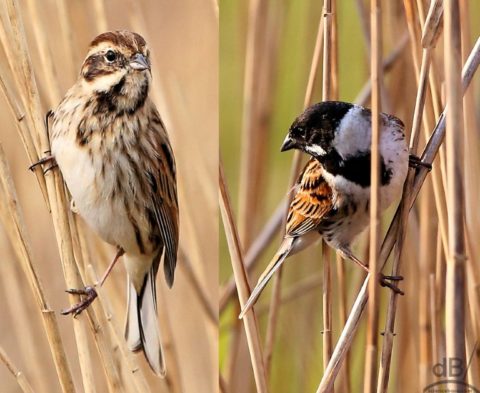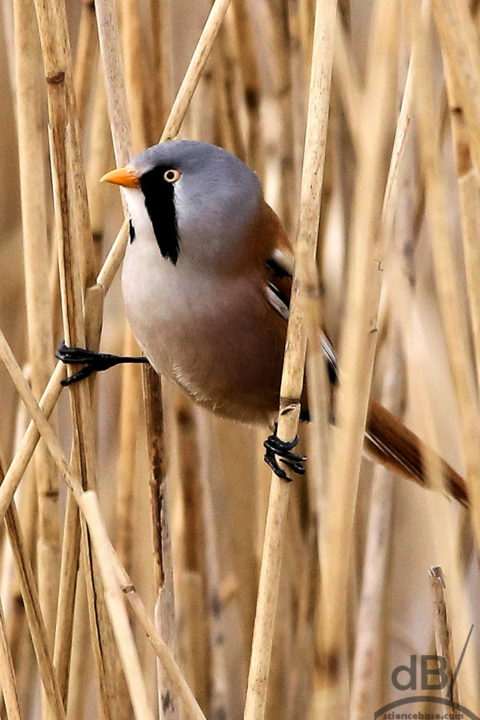On a visit to WWT Welney, Welney Wetland Centre, at the beginning of the year Mrs Sciencebase and I, we were introduced to a couple of new bird species by more experienced birders there: the reed bunting (Emberiza schoeniclus) and the bearded tit (Panurus biarmicus). I don’t think either of us had knowingly seen these species before. Picture directly below are a female (left) and a male (right) reed bunting. (July 2017 UPDATE: That said, there are reed buntings on the cornfields adjacent to where we often walk the dog, so we may have seen them over the last 10 years without really noticing them).
We were in a hide at the centre watching the reed buntings flitting about and I was trying to get a decent snap of both male and female, when a new entrant in the hide pointing out a male kestrel perched on a post outside the hide, said: “Oh, you want to get a shot of that one!” It was the bearded tit…also known as the bearded reedling, it was hard to home in on him, but after several attempts he stopped for a minute on his vertical asymmetric bars and let me get a few shots.
According to Wikipedia, the bearded reedling is a small, sexually dimorphic reed-bed passerine (perching) bird. It does have some resemblance to the long-tailed tit but its “bearded” is more like a pair of front-facing sideburns (mutton chops) rather than a beard as it doesn’t join under the birds beak. Oh, and it’s also sometimes called a bearded parrotbill.
July 2017 UPDATE: I’ve seen and photographed endless reed buntings over the last few weeks and months at various reserves and just in open countryside too (and in the marginal wooded area along the fen drains). Apparently, there are bearded tits at NT Wicken Fen, we’re yet to see any others than the ones we saw at the beginning of the year in WWT Welney.
UPDATE: 2019 discovered that quite a few Beardies at RSPB Ouse Fen (also known to be at RSPB Fen Drayton)

